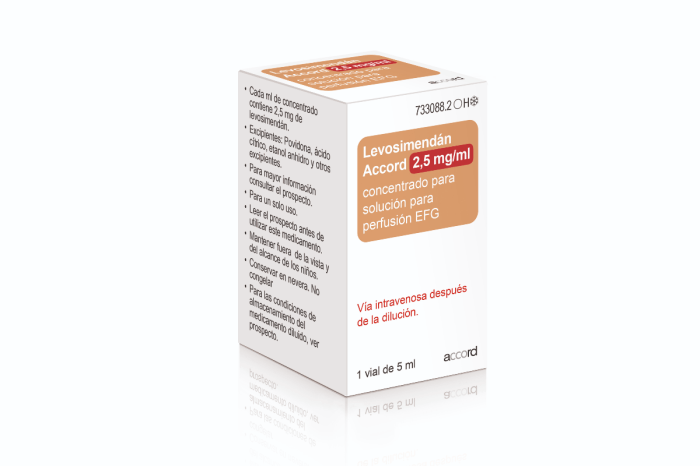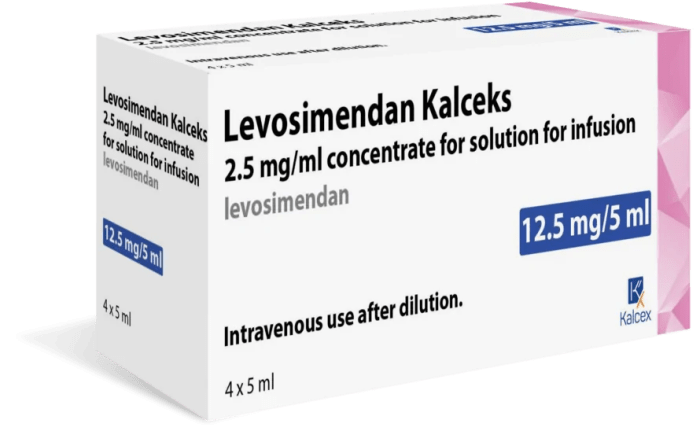Levosimendan, a unique cardiac inotrope, stands out for its ability to enhance heart function without the typical negative effects associated with traditional inotropes. Its mechanism of action, involving calcium sensitization and vasodilation, offers a distinct approach to managing conditions like acute heart failure. This article delves into the intricacies of levosimendan, exploring its therapeutic applications, pharmacokinetic properties, clinical evidence, and future prospects.
Levosimendan’s impact extends beyond simply increasing heart contractility. It works by sensitizing the heart muscle to calcium, allowing for more efficient contractions. Simultaneously, it relaxes blood vessels, reducing afterload and improving blood flow. This dual action makes it a valuable tool in the treatment of conditions where the heart struggles to pump effectively.
Levosimendan vs. Other Inotropes

Levosimendan is a calcium sensitizer that increases myocardial contractility and improves cardiac output. It differs from other inotropic agents in its mechanism of action and clinical applications. This section will compare and contrast levosimendan with other inotropic agents, analyzing their advantages and disadvantages, and discussing specific clinical scenarios where each agent may be preferred.
Comparison of Levosimendan with Other Inotropic Agents
Levosimendan’s unique mechanism of action, which involves calcium sensitization and vasodilation, sets it apart from other inotropes. This distinction influences its clinical applications and advantages compared to other agents.
- Mechanism of Action: Levosimendan is a calcium sensitizer, meaning it enhances the sensitivity of cardiac muscle to calcium, leading to increased contractility without increasing oxygen demand. In contrast, other inotropes, such as dobutamine and dopamine, primarily increase contractility by stimulating beta-adrenergic receptors, which can lead to increased oxygen demand and potential adverse effects.
- Hemodynamic Effects: Levosimendan exhibits both inotropic and vasodilatory effects, resulting in improved cardiac output and reduced afterload. This combination is beneficial in patients with heart failure, as it can improve both contractility and blood flow. Other inotropes, such as dobutamine, primarily focus on increasing contractility, while others like milrinone have vasodilatory effects. The specific effects of each agent depend on its mechanism of action and the patient’s underlying condition.
- Clinical Applications: Levosimendan is primarily used for the short-term management of acute heart failure, especially in patients with severe symptoms and reduced ejection fraction. It has also shown promise in other conditions, such as cardiogenic shock and pulmonary hypertension. Other inotropes, such as dobutamine and dopamine, are more commonly used in patients with heart failure, but their use may be limited by potential adverse effects. Milrinone is often used for short-term management of heart failure and cardiogenic shock. The choice of inotropic agent depends on the patient’s specific condition and clinical presentation.
- Advantages and Disadvantages: Levosimendan’s advantages include its unique mechanism of action, which results in improved contractility without increasing oxygen demand, and its vasodilatory effects, which reduce afterload. However, it has a relatively short half-life and can cause adverse effects, such as hypotension and bradycardia. Other inotropes also have advantages and disadvantages, and their use should be carefully considered based on the patient’s individual needs.
Clinical Scenarios for Levosimendan vs. Other Inotropes
The choice of inotropic agent depends on the patient’s clinical presentation, underlying condition, and individual needs. Levosimendan is particularly well-suited for patients with acute heart failure, especially those with severe symptoms and reduced ejection fraction.
- Acute Heart Failure: Levosimendan is a valuable option for patients with acute heart failure, especially those with severe symptoms and reduced ejection fraction. It can improve cardiac output and reduce afterload, leading to improved hemodynamics and symptom relief. Other inotropes, such as dobutamine and dopamine, are also used in acute heart failure, but their use may be limited by potential adverse effects.
- Cardiogenic Shock: Levosimendan has shown promise in the treatment of cardiogenic shock, a life-threatening condition characterized by low cardiac output and inadequate tissue perfusion. Its ability to improve contractility and reduce afterload can be beneficial in this setting. Other inotropes, such as dobutamine and milrinone, are also used in cardiogenic shock, and the choice of agent depends on the patient’s individual needs.
- Pulmonary Hypertension: Levosimendan’s vasodilatory effects may be beneficial in patients with pulmonary hypertension, a condition characterized by high blood pressure in the pulmonary arteries. It can reduce pulmonary vascular resistance and improve right ventricular function. Other inotropes, such as milrinone, are also used in pulmonary hypertension, and the choice of agent depends on the patient’s individual needs.
Future Directions and Research

Levosimendan has shown promise as a cardioprotective agent, but ongoing research continues to explore its potential benefits and limitations. Future directions for levosimendan research focus on refining its clinical applications, exploring novel uses, and understanding its long-term effects.
Potential New Applications and Indications
Ongoing research is exploring potential new applications for levosimendan beyond its current use in acute heart failure. Researchers are investigating its potential in various settings, including:
- Cardiac surgery: Levosimendan may help protect the heart during surgery, reducing the risk of complications. Studies are evaluating its use in patients undergoing coronary artery bypass grafting (CABG) and valve replacement surgery.
- Chronic heart failure: While currently approved for acute heart failure, researchers are investigating its potential for long-term use in managing chronic heart failure. Studies are exploring its effects on heart function, quality of life, and mortality in patients with chronic heart failure.
- Pulmonary hypertension: Levosimendan’s vasodilatory properties have led to investigations into its potential for treating pulmonary hypertension. Early studies suggest it may improve pulmonary artery pressure and right ventricular function in patients with this condition.
- Sepsis-induced cardiomyopathy: Sepsis, a severe infection, can lead to heart dysfunction. Levosimendan’s potential to improve cardiac function in sepsis-induced cardiomyopathy is being investigated.
Future Outlook for Levosimendan in Cardiovascular Medicine
Levosimendan’s unique mechanism of action and promising clinical results have generated significant interest in its potential for treating various cardiovascular conditions. Ongoing research is expected to shed light on its long-term safety and efficacy, expanding its role in cardiovascular medicine. Future research may focus on:
- Optimizing dosing strategies: Researchers are investigating optimal dosing regimens to maximize levosimendan’s benefits while minimizing potential adverse effects.
- Developing new formulations: Research is underway to develop new formulations of levosimendan, such as oral or long-acting versions, to enhance its convenience and effectiveness.
- Exploring combination therapies: Researchers are exploring the potential benefits of combining levosimendan with other cardiovascular medications, such as beta-blockers or ACE inhibitors, to improve patient outcomes.
Patient Education and Counseling

This brochure provides essential information about levosimendan, a medication used to treat heart failure. Levosimendan is a calcium sensitizer, which means it helps your heart muscle contract more effectively. It is important to understand how levosimendan works, its potential side effects, and how to take it safely. This information will help you work with your healthcare provider to manage your heart failure effectively.
Medication Administration
| Topic | Information | Importance | Action |
|---|---|---|---|
| Route of Administration | Levosimendan is administered intravenously (IV) over a period of 24 hours. | Ensuring the correct route of administration is crucial for proper absorption and effectiveness of the medication. | Consult your healthcare provider for instructions on how to administer the IV infusion. |
| Dosage | The dosage of levosimendan is determined by your doctor based on your individual needs and condition. | Accurate dosage is essential for achieving the desired therapeutic effect and minimizing the risk of side effects. | Follow your doctor’s instructions regarding the dosage and frequency of administration. |
| Duration of Treatment | The duration of treatment with levosimendan depends on your individual needs and response to the medication. | Monitoring your response to the medication and adjusting the treatment duration as needed is crucial for effective management of heart failure. | Discuss the duration of treatment with your doctor and follow their instructions. |
Potential Side Effects
Like all medications, levosimendan can cause side effects. While not everyone experiences side effects, it’s important to be aware of the potential risks.
| Topic | Information | Importance | Action |
|---|---|---|---|
| Common Side Effects | Common side effects include headache, dizziness, low blood pressure, and nausea. | Being aware of common side effects allows you to recognize and report them to your doctor. | Inform your doctor if you experience any of these side effects. |
| Serious Side Effects | Serious side effects, although rare, can include irregular heartbeat, low blood sugar, and liver problems. | Early detection and treatment of serious side effects can prevent complications. | Seek immediate medical attention if you experience any serious side effects. |
Drug Interactions
Levosimendan can interact with other medications, which may affect its effectiveness or increase the risk of side effects.
| Topic | Information | Importance | Action |
|---|---|---|---|
| Known Interactions | Levosimendan may interact with medications used to treat high blood pressure, heart rhythm problems, and blood clotting. | Avoiding potential drug interactions is crucial for ensuring the safety and effectiveness of your medication. | Provide your doctor with a complete list of all medications, including over-the-counter drugs, vitamins, and supplements, you are taking. |
Follow-Up Care, Levosimendan
Regular follow-up care is essential for monitoring your response to levosimendan and ensuring your heart failure is effectively managed.
| Topic | Information | Importance | Action |
|---|---|---|---|
| Monitoring Your Condition | Your doctor will monitor your heart function, blood pressure, and other vital signs regularly. | Regular monitoring allows your doctor to assess your progress and adjust your treatment plan as needed. | Attend all scheduled follow-up appointments with your doctor. |
| Reporting Side Effects | Report any new or worsening side effects to your doctor immediately. | Prompt reporting of side effects allows your doctor to address them promptly and prevent potential complications. | Contact your doctor if you experience any unusual symptoms or side effects. |
Levosimendan’s unique mechanism of action, coupled with its clinical efficacy, positions it as a promising therapeutic agent in the management of acute heart failure and other cardiovascular conditions. While ongoing research continues to explore its full potential, levosimendan represents a significant advancement in the field of cardiovascular medicine, offering a valuable option for improving patient outcomes.
Levosimendan is a medication that is used to treat heart failure. It works by increasing the force of the heart’s contractions and by relaxing the blood vessels. This can help to improve blood flow and reduce the workload on the heart. Levosimendan is often used in conjunction with other medications, such as diuretics and ACE inhibitors. However, it is important to note that levosimendan can interact with other medications, such as temazepam , a medication used to treat insomnia.
If you are taking levosimendan, it is important to talk to your doctor about any other medications you are taking, including over-the-counter medications and supplements.